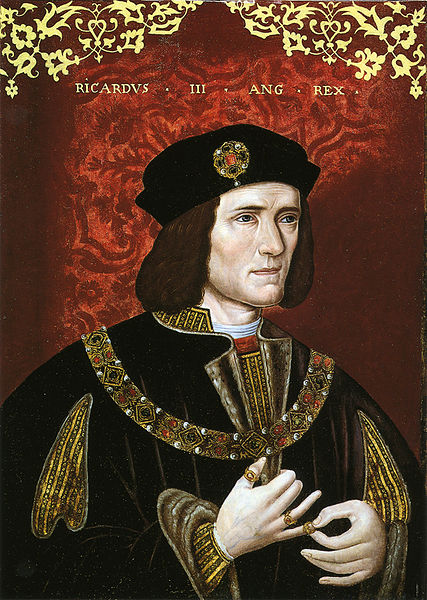Some surprising Canadian connections to Richard III
King Richard III was reburied today, in Leicester England.
Back in February of 2013, the announcement that the body unearthed in an ordinary parking lot was that of Richard III made quite a splash.
The many events surrounding this month’s reburial in Leicester included gobs of the sort of ceremony and fuss that makes some swoon and others roll their eyes. (Or turn it all into social media fodder, as with Richard III live tweeting his own funeral.)
Even if you think the concept of royal anything belongs on the dust bin of history, many aspects of this story – as a mystery to be solved, if possible – have been pretty remarkable.
Richard III was famous/infamous to begin with, of course. He was the last English King to die in battle, when he lost to a Tudor challenger who then became Henry VII (father of the even more famous Henry VIII). Richard III may or may not have killer his two nephews, the princes in the Tower, but no less than Shakespeare gave him theatrical immortality as a hunchbacked villain.
So, besides reminding readers of why this corpse has gravitas, the other angles of the find, and the reburial, have been fertile ground for all kinds of coverage.
I suspect the hullabaloo has been a fairly small item in passing for the American press. It’s a bigger deal in the UK because this is their country’s story. And it’s been getting extra attention in Canada, because of the surprising number of Canadians who helped make it happen.
Writing for Maclean’s, Patricia Treble (that magazine’s actual royal watcher) drew many interesting threads together in “Canada’s connection to King Richard III: The inside story“.
Treble describes how a key researcher in proving the body’s identity was (Canadian) geneticist Turi King. And that another Canadian, Michael Ibsen, provided the mitochondrial DNA that clinched the discovery.
Ibsen is a cabinetmaker who lives in England. After being asked, Ibsen hand-crafted an oaken coffin for his uncle of 17 generations back. From Treble’ account:
The order for the coffin came from Leicester Cathedral. “It’s very special,” Ibsen says, “discovering that you are related to Richard III and then being able to use your natural abilities to be part of the whole reinterment.”
Ibsen felt the coffin should be made of oak and had the bright idea to see if that could be sourced from the Duchy of Cornwall
Since its creation in 1337, it has had one primary purpose: to provide income to the prince of Wales. Today, its holdings are run on a commercial basis for the 24th duke, Prince Charles.
Last December, Ibsen made the trek to the sawmill, which saws and stores wood for the duchy. Sawmill owner Bullough [Will Bullough, yet another Canadian living in England] had picked boards from a duchy tree felled four winters before: six oak planks, each four metres long, half a metre wide and 1.5 inches thick. It took two men to budge one. For Ibsen, there is a symmetry in using duchy wood, and it extends five centuries. “The timber for Richard’s coffin is coming from the estate of the next king,” he says.
Really, you couldn’t make this stuff up. The long persistent interest in reconsidering Richard III’s standing and reputation. The eerily successful hunt for his body. The DND trail, not as easy as you might think. And the way it all seemed to come together, with hardly any hanging threads.
If you’d like to see Ibsen and the simple wood shop where the coffin was made, that’s included in this feature from CBCs “The National“.
And for all the pomp of “he was King, King of England!” there’s something rather humble and human about that hands-on task. Imagine contemplating human remains – to which you are related – and building a dignified coffin from some really nice oak, so bones that were hacked and mocked when they last walked the earth, 530 years ago, can go to rest in dignity.
Richard III doesn’t care. He’s long, long dead. And geneticist Turi King hasn’t let it go to her head, saying her detective work on this was nothing “like curing cancer”. But it was (is) an exciting combination of history, mystery and humanity, as depicted in Treble’s fine article.
Tags: canada, history, Michael Ibsen, Patricia Treble, Richard III, Turi King








